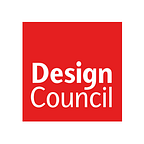Double Diamond: Sanjan Sabherwal
I didn’t get it. Studying industrial design, we spent the first two years sketching, model making in workshops, learning software. Then the tutors dropped an abstract Double Diamond process upon us. The model was immaterial but seemed rigid and not easy to change. We referred to it regularly, but I felt it was to get the marks not get results.
I didn’t see the value until I became the Government’s first ‘Policy Designer’ at Policy Lab two years ago where the double diamond was the way to successfully express that very same unstructured process in a big, bureaucratic organisation. I finally got it. The model’s structure prised open a space for design in corporations and institutions, protecting design from scrutiny, and helped design express itself and add value. The double diamond became designers’ flag and I pledged allegiance.
But, after using the Double Diamond on over 20 projects, from regulating self-driving boats to helping homeless people register to vote, I’ve felt empowered to redesign it; to improve how we communicate the ideal state of a Lab innovation project. In early stage policy development, we often work in the liminal space between phases. But the diamond seemed to undervalued these crucial steps when we developed project proposals. So I adapted it, to focus on the X’s and not the Diamonds — drawing the ‘explore phase’.
The Double Diamond has been instrumental in getting design recognised in government but it’s important to remember where it came from, drawn on the back of napkin, rough and creative. If it becomes too formulaic we risk losing the very creativity it was designed to set free.
